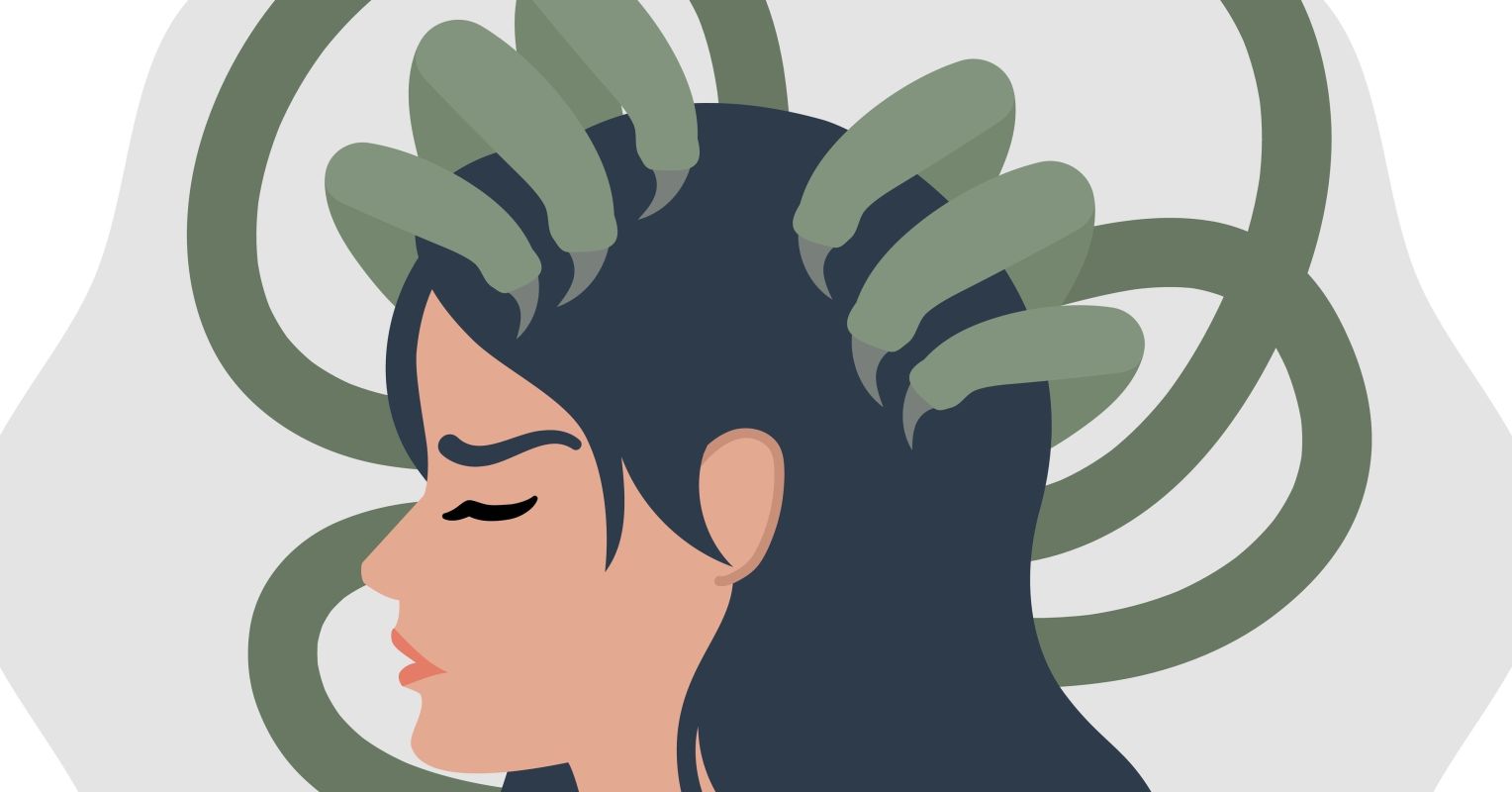
What are intrusive thoughts?
The term “intrusive thoughts” has become common parlance from mental health creators on social media such as TikTok, and people have resonated with it. In psychiatry, we don’t usually talk about intrusive thoughts as one entity, but rather, we look at specific types of intrusive thinking that come up in various psychiatric conditions. While the broader term that has taken hold is accurate and helps people communicate their experience, it’s also incomplete because not all intrusive thoughts are alike, and we need more detail to build successful interventions.
In a 2005 book about intrusive thoughts in psychiatric disorders by David Clark, they are described as “any distinct, identifiable cognitive event that is unwanted, unintended, and recurrent. It interrupts the flow of thought, interferes in task performance, is associated with negative affect, and is difficult to control.” (1) In plain language, it means these are thoughts you don’t want, and you can’t control, and they keep coming back. They make it hard to think about other things and do the tasks you need to do, and they cause emotional distress. There can be expected, self-limited versions of intrusive thoughts, and there can be harmful, distressing, and unending ones as well.
Typical Versus Atypical Intrusive Thoughts
Normal episodes of intrusive thinking can be triggered by life events, such as grief and loss. When my mom died 20 years ago, I couldn’t stop thinking about her, and I couldn’t quiet the thoughts for weeks. As the months passed, the intrusive quality of the thoughts settled, and they eventually became more about memories and stories. Exciting events can also lead to a self-limited period of intrusive thoughts. When I found out I was pregnant with my first child, I asked my friend who had a 2-year-old if I would ever stop thinking every minute about being pregnant. She reassured me it would quiet down, and it did.
But what about intrusive thoughts that don’t resolve on their own? Intrusive thoughts aren’t a diagnosis. A variety of psychiatric disorders can cause intrusive thoughts, and the content and patterns of the thoughts will reflect the underlying diagnosis. Common (but not exclusively) causes of intrusive thoughts include depression, anxiety disorders, obsessive-compulsive disorder, and ADHD. And while there are approaches that can help intrusive thoughts in a general way, the most effective interventions address the underlying diagnosis.
Subtypes of Intrusive Thoughts
In depression, people experience intrusive thoughts that are “mood congruent.” That means the thoughts are consistent with the mood tone—dark, negative, hopeless, self-critical, and guilty. “I’m a loser,” or “I only cause people pain,” or “Nothing is good in my life or the world; everything sucks all the time” are typical of intrusive, depressive thoughts. These can spiral into dangerous types of thinking, such as not wanting to live. Depressive intrusive thoughts are often referred to as ruminations.
Anxiety disorders notoriously cause intrusive thoughts. These include specific phobias—such as repeated thoughts about bridges collapsing and how to get places without going over a bridge. Or it can be more generalized anxiety, thinking “what if” around every possible scary outcome. Everyone has general worries sometimes, such as, “What if someone breaks into my house?” But an anxiety disorder can keep those worries coming over and over, never able to be reassured, making it hard to leave the house—or fall asleep.
In children, generalized anxious thoughts often include fears of someone breaking into their home or worries about their parents’ safety. Separation anxiety disorder causes children’s thoughts to become crowded with fears of what can happen when a parent is out of sight. In all ages, health worries or social worries are common themes of anxious, intrusive thoughts.
Obsessive-compulsive disorder (OCD) is fundamentally a problem of intrusive thinking. Obsessional fears—worries that can’t be quieted with any logic and return ferociously over and over—are serious medical symptoms. Fear of contamination, fear of saying or doing something you would never actually say or do, and fear that you have already done or said something terrible are some examples. I once worked with a patient who had to re-drive their route home hundreds of times because they thought they had hit something, and they couldn’t be reassured even after checking. OCD thoughts are typically disconnected from our actual interests, actions, values, and desires—and disconnected from any reassurances or logical explanations, important features in distinguishing OCD thoughts from other types of intrusive thinking.
Attention Deficit Hyperactivity Disorder (ADHD) is a common cause of intrusive thinking—a “busy brain” that’s always thinking and hard to quiet. People struggle to cut through their thoughts to focus on the task at hand. Or there may be over-focus on one thing, making it hard to move to something else. Intrusive thoughts distract internally, and for many with ADHD, these are as hard external distractions.
Other diagnoses have intrusive thinking. PTSD flashbacks are highly intrusive experiences that aren’t just thoughts but rather terrifying re-experiences of the traumatic events. Autism spectrum disorder is associated with repetitive behavior and thoughts (perseverations) that can be considered intrusive, but they don’t always cause distress for the person experiencing them—they often feel pleasant and comforting. Eating disorders lead to intrusive thoughts about weight, body image, and food. Additional types of intrusive thoughts go beyond this post, such as those in mania and schizophrenia. But importantly, intrusive thoughts are important symptoms in many psychiatric conditions.
Combinations Are Common
Combinations of intrusive thinking variations are common, which can complicate the story, but addressing origins remains critical in developing the most effective interventions—types of therapy, medications, work and school supports, groups and community resources, coaching, family interventions, and more.
Intrusive thoughts are like uninvited guests who show up without warning and start shouting at you—and they won’t leave, and they won’t shut up. What they are saying and how they say it will vary based on their origins—but until you figure out where they came from, it will be hard to get them to quiet down and move out.
